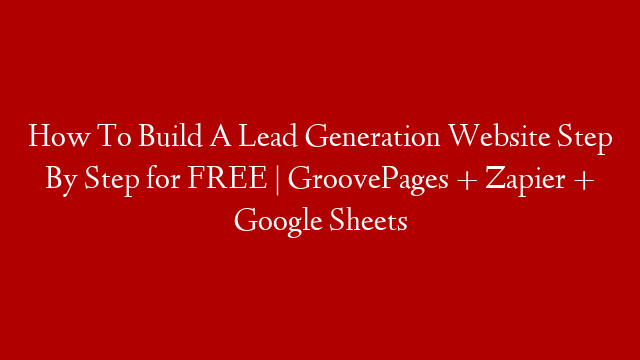As a roofing contractor, you know that lead generation is essential to the success of your business. You also know that the lead generation landscape is constantly changing, and what worked last year may not work this year.
That’s why we’ve put together this comprehensive guide to lead generation for roofing and service contractors in 2022. In it, we’ll cover the following topics:
The Different Types of Leads and How to Generate Them
The Benefits of Lead Generation
The Best Lead Generation Strategies for Roofing and Service Contractors
How to Measure the Success of Your Lead Generation Efforts
Let’s get started!
What Are Leads?
Leads are potential customers who have shown interest in your company’s products or services. They can come from a variety of sources, including online ads, referrals, cold calls, or trade show visits.
Once you’ve generated a list of leads, it’s important to nurture them so they eventually become paying customers. This process is called lead nurturing or lead management.
Benefits of Lead Generation for Roofing and Service Contractors
Lead generation is beneficial for roofing and service contractors because it:
-Allows you to target your marketing efforts -Helps you track your marketing progress -Generates high-quality leads that are more likely to convert into customers -Saves you time by providing a steady stream of leads -Reduces your marketing costs -Increases brand awareness Why Is Lead Generation Important? For roofing and service contractors, lead generation is important because it allows you to target your marketing efforts. By generating leads, you can focus your marketing budget on the channels that are most effective at reaching your target audience. Additionally, lead generation helps you track your marketing progress so you can see which campaigns are generating the most leads and adjust your strategy accordingly. Finally, lead generation provides a steady stream of high-quality leads that are more likely to convert into customers. This saves you time and money by reducing your need to generate new leads through other means (such as cold calling). What Are the Different Types of Leads? There are four main types of leads: 1. Marketing Qualified Leads (MQLs) 2. Sales Qualified Leads (SQLs) 3. Service Qualified Leads (SQls) 4. Product Qualified Leads (PQLs) Marketing Qualified Leads (MQLs) are leads that have been identified as having a high likelihood of becoming customers based on demographic information and/or behavior data. For example, an MQL might be someone who has visited your website multiple times, subscribed to your email list, or downloaded a white paper from your site. Sales qualified leads (SQLs) are those that have been determined to be ready to buy based on their interactions with your sales team. For example, an SQL might be someone who has requested a price quote or scheduled a demo with a salesperson. Service qualified leads (SQls) are those that have been determined to need customer support or other services based on their interactions with your company. For example, an SQl might be someone who has called customer support multiple times or raised multiple tickets with your support team. Product qualified leads (PQLs) are those that have been identified as likely to become customers based on their interactions with your product team. For example, a PQL might be someone who has installed a free trial of your software or signed up for a free trial of your service



